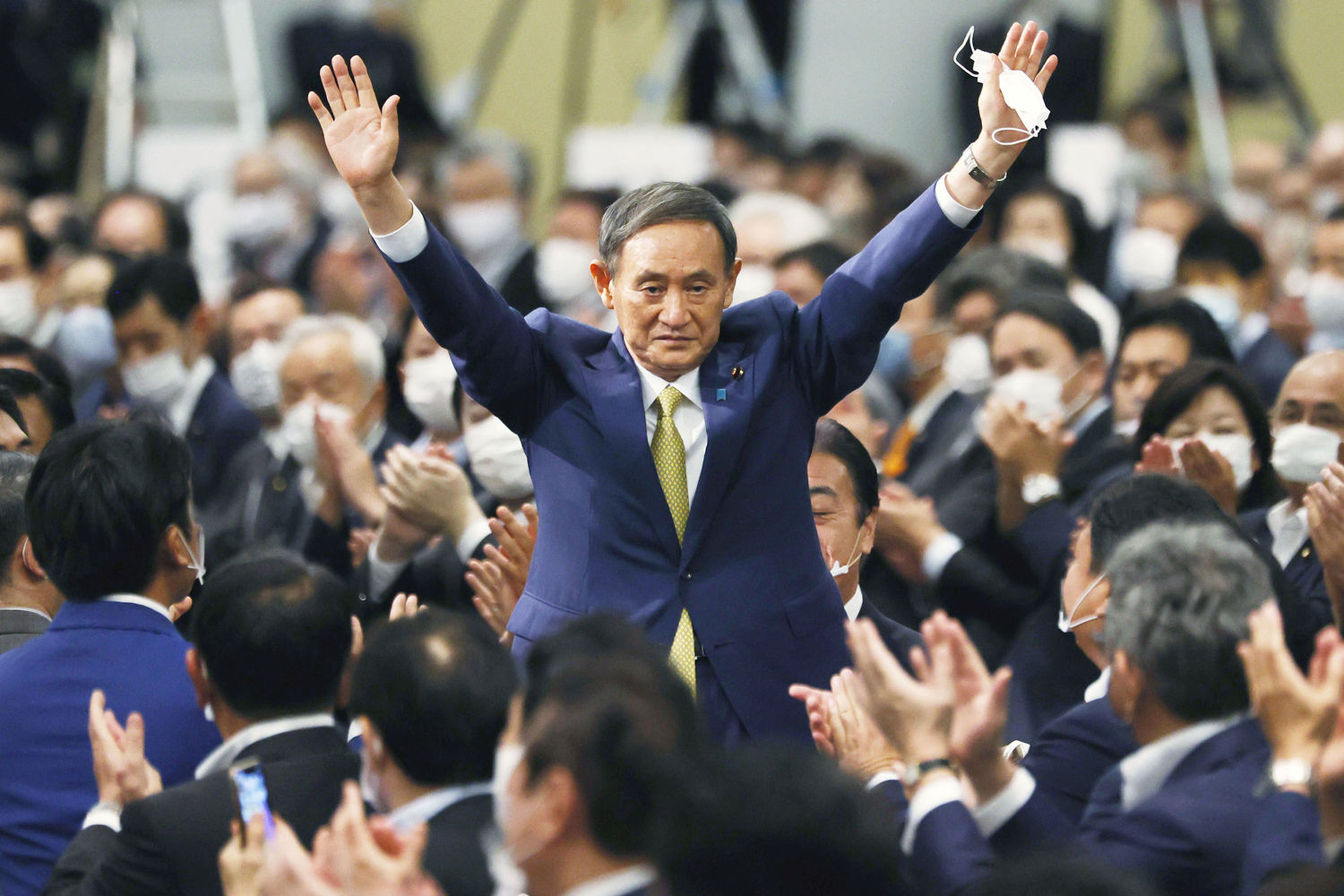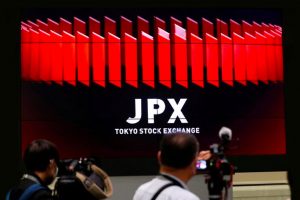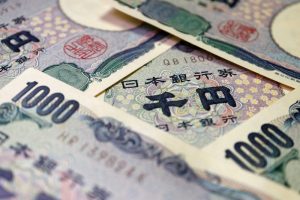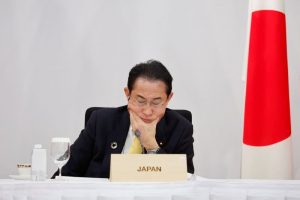(ATF) “Suganomics” might just succeed in Japan where “Abenomics” failed. Each are easy cliches, used to describe the country’s prevailing and preceding economic eras under two successive prime ministers, but like most overworked sayings, the two terms encapsulate a truth.
In this case it’s the fact that Japan is in desperate need of an economic kick in the pants, and has been for rather a long time. You could argue that each of these “nomics” is rooted in the fug of quasi-despair and foolish hope – Japan’s been in trouble long enough to make it so.
Abenomics was heralded at the start of prime minister Shinzo Abe’s second term in 2012 and aimed at boosting Japan’s economic competitiveness via structural reform, turning on the money supply tap in the hope of creating inflationary pressure to counter years of deflation while exerting tight fiscal policy in the hope of reducing the country’s astronomical public debt.
Those were his “three arrows” and one might be tempted to damn their results with faint praise. There was unprecedented quantitative easing which exploded the balance sheet at the Bank of Japan (BoJ) from 30% to more than 100% of gross domestic product (GDP) – it now stands at 125% of GDP thanks to government pandemic spending measures.
Of course the BoJ is not unique among central banks for colossal balance sheet expansion, nor is Abenomics responsible for that pandemic-induced surge.
You might argue that the BoJ’s Abenomics quantitative easing under governor Haruhiko Kuroda has ventured into moral hazard territory – the bank started buying corporate debt in 2014 and has added equities to its holdings via purchases of ETFs, something from which the US Federal Reserve has demurred.
LACK OF PROFOUND IMPACT
If Abenomics succeeded it was in increasing nominal GDP, which rose in the seven years following the start of the programme. But real GDP – growth factoring in inflation – didn’t increase to any meaningful extent, averaging around the 2% mark for that period.
The negative policy rate environment and government bond yield curve targeting via caps didn’t have the profound impact which was hoped for, the former failing to significantly depreciate the yen to increase trade competitiveness and the latter reducing debt issuance to well below its potential volume as institutional money balked at the parsimonious returns available.
A hoped-for pivot towards greater risk appetite among the notoriously conservative Japanese investor base failed to emerge in any meaningful sense, other than in a greater willingness to book duration and a willingness among domestic lenders to venture into overseas project finance.
So how might Suganomics, the epithet coined for policy under recently installed prime minister Yoshihide Suga, provide the jolt that the three arrows failed to deliver?
In the first place the question is whether he will end up as one of Japan’s many prime ministers who have lasted a year or less. He fits into that bracket, with his somewhat dour mien and plummeting popularity – the 72% rating he enjoyed last September after replacing Abe has crashed by nearly a third.
Meanwhile, the pall of coronavirus seems likely to hang over Japan between now and when a Liberal Democratic Party leadership contest must be held towards the end of the year. A snap election is likely and victory would keep Suga in power.

OLYMPIC GAMES FACTOR
A successfully executed Olympic Games, scheduled to start in Tokyo in July after a year-long delay, might cement Suga’s leadership – the political capital to be extracted from this extravaganza must not be underestimated.
That’s what the UK’s Boris Johnson discovered after overseeing the London Olympics as mayor in 2012, something to which he might owe his premiership.
But that’s probably to miss the point. Suganomics as it has been rolled out so far has not veered radically from Abenomics and the three arrows remain in place – unsurprising given Suga’s role in helping formulate the policy as Abe’s adviser in his role as cabinet secretary.
The add-ons, if that’s the right term, have been a heightened sense of the urgent need for structural reform and a willingness to find growth opportunities within the straitjacket of Japan’s disastrous shrinking and ageing population demographic.
Suga – an easily underestimated man who is known for his ruthless determination to drive through policy in the face of bureaucratic dissent – has sought to address Japan’s structural problems via measures which seek to revitalise the country’s rural areas, rationalise the regional banking system, which is bloated and unprofitable, and aim at digitalisation.
DIGITAL TRANSFORMATION
Anyone who has visited Japan in recent times will be aware of the country’s peculiar analogue backdrop and digital primitivism compared with many of its developed and, in many cases, developing peers. Suga has established a digital agency which will help – if combined with measures to push Japan towards sustainability – to achieve the “twin transformation”, which is the prevailing buzz phrase among government and the corporate sector globally.
Digitalisation and sustainability are seen as the pillars of that transformation, the core drivers of the Fourth Industrial Revolution underway underneath the ashes of the pandemic. Perhaps no major economy needs to see their manifestation with greater urgency.
“The digital agency should become a strong organisation which can function as a powerful control tower, with highly talented people gathering from both the public and private sectors, to lead the digitalisation of the society as a whole,” Suga said at the start of his administration.
The hope is that the new agency will not ossify into a bureaucratic tendency to pay only lip-service to reform, but will sit above other ministries as a major government priority and have the power to hire the most skilful global talent, with the aim of digitally transforming Japanese society.
Meanwhile, sustainability has the potential to be similarly radically transformative. Japan’s statement of intent to achieve net zero carbon status by 2050, in line with the requirements of the Paris climate accord, could seem a convenient piece of lip-service, but as a “fifth arrow” it might help crucially to deliver the profound economic stimulus which monetary policy has failed so far to do.
MULTIPLIER EFFECT
A low carbon supply chain can create employment and provide economic stimulus, particularly as Japan struggles to recover from the Covid-19 pandemic. Investment in transmission infrastructure can also act as an effective economic stimulus given its high economic multipliers.
“Investors can provide financing to businesses to enable the expansion of renewables in Japan. As the market for renewables grows, the market valuation of businesses in the low-carbon supply chain, including storage companies, aggregators, and manufacturers of low-carbon power equipment, will rise,” observed analysts from the Principles for Responsible Investment in a recent white paper, Delivering Net Zero Emissions in Japan.
And as the cost of renewable energy falls, there is a limited need for public subsidy and a huge requirement for electricity grid infrastructure to efficiently deliver renewable power – estimated by McKinsey to amount to as much as US$69 billion by 2030.
Electric vehicles (EVs) also present a huge stimulus opportunity, with the consultancy suggesting that the deployment of 5.3 million EVs in the country by 2030 requires $225 billion of investment, including $9 billion for electric charging infrastructure. Japan is the world’s third-largest car market and the potential looks immense.
A political hot potato in Japan is immigration, but it presents a much-needed remedy to Japan’s demographic woes. Suga supports it and is likely to pursue it in a second term.
In the final analysis, Suganomics, the appended version of Abenomics demonstrates immense promise, and on the basis of current evidence it is hoped the incumbent prime minister will oversee the agenda. But even absent his presence, the agenda is likely to be pursued in any case – the policy solutions presented therein are on the mark, in tune with the global zeitgeist and avoided at Japan’s peril.
Whatever “nomics” presents in Japan, it will the one outlined above, hopefully for the country’s betterment.
Jonathan Rogers is founder and CEO of Singapore-based financial public relations company Ostinato Associates. He worked as an investment banker specialising in fixed income and structured products for Nomura and First National Bank of Chicago in London, before moving into financial journalism as debt capital markets editor of International Financing Review. He is the author of Opportunities in the Asian Bond Markets and holds a first-class honours degree in politics, philosophy and economics from the University of Oxford.
ALSO SEE:
Forget geopolitics, self-interest comes first for Asia-focused banks
ESG revolution goes from quiet to loud – VERY LOUD
After a year lost to coronavirus, 2021 already looks exhilarating
























